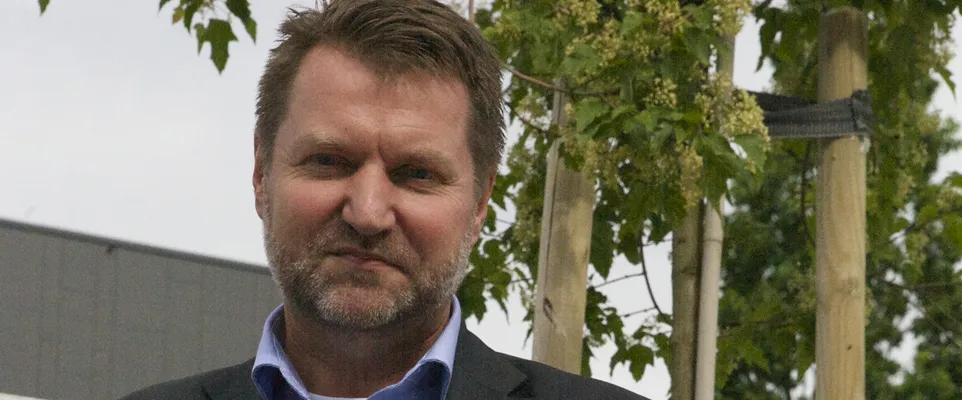 Geir Tungesvik, Statoil’s drilling head, confirms the need to boost efficiency. Photo: Kjell Jørgen Holbbye Cost must come downThe level of costs is a major challenge to Statoil’s ambitions of getting more out of mature fields, says Geir Tungesvik, its senior vice president for drilling and well. Combined with weaker margins, this has prompted a big hunt for efficiency gains. | |||
“We’re in a completely different position now than we were five years ago,” says Tungesvik. “What was sensible then isn’t necessarily the case today.” With 30 years of experience in Statoil, he knows what he is talking about and describes developments as serious. “The oil price less break-even costs declined dramatically in 2008-13, even if prices have remained high and stable in recent years.” That presents new challenges for the company with the world’s highest oil recovery factor – an average of 50 per cent, compared with 35 per cent for its competitors. Statoil’s expressed ambition of improving this even further means that action needed to be taken, and extensive analyses were initiated in the drilling and well unit. “You need to know where you stand in order to decide where you want to go,” explains Tungesvik. “Each area in my unit knows what its greatest challenges are.” Securing an efficiency gain of 25 per cent per well by the end of 2015 is also an objective for the Statoil technical efficiency programme (Step). One of its six sub-projects – end-to-end well delivery – aims to develop standardised well concepts. Tungesvik reports that the substantial turnaround operation now under way represents a completely new way of thinking for Statoil. “Our attention so far has concentrated on maximising recovery, which means that our technical experts have created special solutions for each field. “That’s clearly helped to drive up costs. We now want to establish robust, standardised methods which can be utilised again and again.” | COLLABORATION Statoil has invited its suppliers to collaborate on enhancing efficiency. Tungesvik says it has sat down with the players to identify cost drivers and which standardised money-saving solutions each of them can deliver. “Our clear ambition is that we won’t initiate things which drive up costs,” he explains. “Good reasons could exist for choosing a Mercedes, but is a mass of extra equipment needed? It could also be appropriate to ask how far a correctly outfitted Volkswagen might be better.” Suppliers have responded positively to the invitation, Tungesvik reports, and recalls with a broad smile: “Some were initially sceptical, but they were almost reluctant to leave when the meeting was over.” Reducing costs is undoubtedly also in the interests of the supplies industry. Tungesvik asks rhetorically: “Are we going to risk leaving resources in the ground and shelve projects because they’re unprofitable, or are we going to collaborate over good solutions which sustain a positive level of activity?” | INVESTMENT One reason why Statoil wants to establish standardised solutions can be found in the company’s need to change its investment profile, Tungesvik explains. Spreading capital spending over a field’s producing life would reduce the initial heavy cost. “Where we previously reached three drilling targets simultaneously with a well, we’ll perhaps in future take them one at a time in the same well and stagger the investment,” he says. Such an approach is backed by experience from Statoil’s land-based drilling operations in the USA, where margins are even narrower than on the Norwegian continental shelf (NCS). The use of standardised solutions and the repetition of fixed procedures have created efficiency and profitability in the US, Tungesvik says. SAFETY He denies that a stronger focus on efficiency will affect safety. “Good and robust plans combined with the repetition of standardised operations mean that people know what to do and how to do it. That enhances both efficiency and safety.” This is a key consideration for a company which gives top priority to safe working and can point to first-class results. “Our aim is to be the industry leader for safety,” says Tungesvik. | EXPLOSION But a cost explosion is steadily approaching which could threaten tail-end production on Norwegian fields unless a solution can be found, he warns. This involves the extensive procedures required for permanent plugging and abandonment of wells on the NCS. “The way today’s regulations are framed, it takes as long to plug a well as it does to drill it,” Tungesvik notes. “That’s a massive challenge, and we must find solutions which can cut costs by up to 50 per cent.” Statoil is collaborating closely with ConocoPhillips to find good answers, he reports. “This is a common challenge which we must overcome together.” Statoil technical efficiency programme (Step)
|
